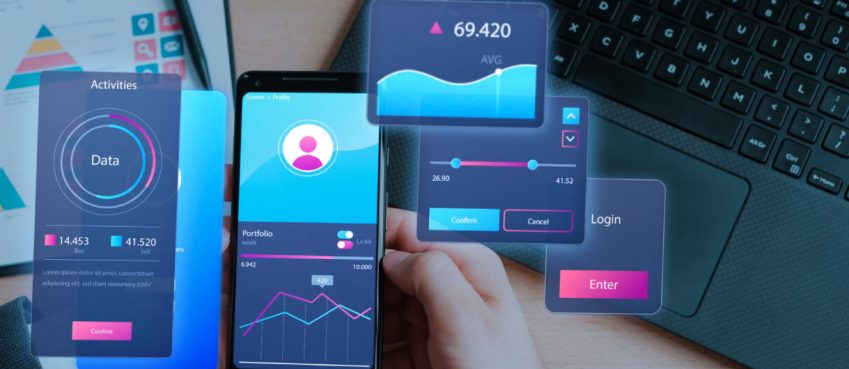
The paradigms of making payments have changed dramatically over the past couple of decades. What had been an inviolable rule for decades became in the blink of an eye an archaism.
The evolution of payments took place and we have to get used to it. But it is not enough only to see this process, it is still necessary to understand it correctly in order to draw appropriate conclusions about the current state of affairs.
In this article, we turned to Boxopay experts to explain the evolution of payments and understand what the current payment software platform essentially is.
Also read: Top 10 Veo 3 AI Video Generators in 2025 (Compared & Tested)Evolution of payments: First payment software
In the pre-Internet era, payment terminals, first introduced by Visa, were the pinnacle of the evolution of payment software. Back there, the payment service providers transformed from purely logistic companies to full-fledged electronic communications providers.
Nevertheless, at that time it was only about physical payment terminals and it was necessary to build a complex infrastructure of transmitters and receivers to keep the system working correctly. Moreover, such terminals were not very suitable for covering the needs of online payments in the 90s, when the Internet began to slowly become a commodity.
In order to provide users with a virtual shopping experience at the proper level and circumvent the many barriers complicating the payment service business, payment gateways were invented. In fact, this is a web version of a payment terminal, which redirects and adapts the mechanism of funds transfer from the online user to the payment processor. Thus acquirers and PSPs could not compete with large payment processors directly, but create added value with merchant- and user-oriented services.
Evolution of payment: Active development
In the 1990s and early 2000s, the evolution of payments focused on total digitalization. With the emergence of e-commerce giants such as Amazon, the flow of customers’ money and investments became unstoppable. Against the backdrop of such market trends, large payment processors tried to take over the function of payment gateways.
However, as it turned out, this way has its unexpected issues. The main one is that no payment gateway is able to handle the transaction flow from the entire user base. Individual payment gateways continue to flourish, providing, among other things, a distribution function, focusing on individual customer segments.
In total, in addition to payment gateways, the evolution of payment systems has also led to the emergence of technologies such as:
- Mobile payment services
- Data storage systems
- Encryption and data protection systems
Impact of e-commerce today
The evolution of payments has led to the fact that e-Commerce is one of the most profitable niches. Online purchases alone accounted for a total of USD 4.6 trillion in transactions in 2020, with an annual growth rate of 10%-20%. This rapid growth is directly related to the increasing popularity of digital payments.
Experts predict that the trend of digitalization of all financial services will only become more entrenched in everyday life, and digital wallets will account for 51.7% of e-commerce transaction volumes by 2024. This suggests that the need for acquirers and PSPs will only grow, so it is high time to take a profitable position in this niche.
Evolution payment software: Relevant technologies in today’s environment
Now let’s look at the result of the evolution payment software went through. The approach of large payment processors did not work and instead of large platforms with maximum functionality, specialized lightweight solutions gained popularity. Everyone has different needs, so it is much more convenient for acquirers or PSPs to determine the functions they need on their own. In particular, distinctive features of payment software in the current environment are:
Modularity
Today API-first is the dominant approach in software development. It allows PSPs and acquirers to choose modules that are exactly what their business needs and not to pay for excessive functionality. For example, the Boxopay platform is divided into several separate modules:
Payment Gateway
This is the backbone of all payment-linked software. A functional payment gateway will allow you to accept and process transactions in a continuous flow generating revenue.
Payment-linked loyalty software
Payment software can be equipped with marketing tools. For example, a loyalty software module will help to create personalized loyalty systems for customer retention.
KYC module
If necessary, the software can include functionality to automatically confirm the identity of customers. This module allows you to spend about 15 minutes on the KYC procedures and reduce the cost of new customer authorization by 60%.
White-label application for small merchants
The payment solution can be equipped with a management module for small and medium merchants. It will allow acquirers and PSPs to significantly reduce the burden of providing self-service.
Turnkey services
Modern software vendors offer not only the product but also all accompanying services. With a comprehensive approach, you get everything you need to get your business up and running quickly. Thus, you get powerful tools as well as a reliable technology partner who will provide all the necessary turnkey services.
Different software delivery models
Another relevant trend in today’s world is the variety of payment models to best fit your workflow. In addition to the license purchase and SaaS distribution model, there is also the software lease or pay-as-you-earn model. In this case, there are no installation fees and the money is charged on a payment-for-transaction pricing basis.
Also read: How To Stream On Twitch? Twitch Streaming Guide For Streamers, Gamers, and Fans! (2024 Updated)Bottom line
So, now you know about the evolution payment systems have undergone. This way you’ll understand much better which type of software today will best meet all your business requirements. With a reliable technology partner, you can find the best solution much faster and outpace your competitors.
Contact the good experts now and get payment software that will fully meet your vision and all legal requirements.
Top 10 News
-
01
Top 10 Deep Learning Multimodal Models & Their Uses
Tuesday August 12, 2025
-
02
10 Google AI Mode Facts That Every SEOs Should Know (And Wha...
Friday July 4, 2025
-
03
Top 10 visionOS 26 Features & Announcement (With Video)
Thursday June 12, 2025
-
04
Top 10 Veo 3 AI Video Generators in 2025 (Compared & Te...
Tuesday June 10, 2025
-
05
Top 10 AI GPUs That Can Increase Work Productivity By 30% (W...
Wednesday May 28, 2025
-
06
[10 BEST] AI Influencer Generator Apps Trending Right Now
Monday March 17, 2025
-
07
The 10 Best Companies Providing Electric Fencing For Busines...
Tuesday March 11, 2025
-
08
Top 10 Social Security Fairness Act Benefits In 2025
Wednesday March 5, 2025
-
09
Top 10 AI Infrastructure Companies In The World
Tuesday February 11, 2025
-
10
What Are Top 10 Blood Thinners To Minimize Heart Disease?
Wednesday January 22, 2025







